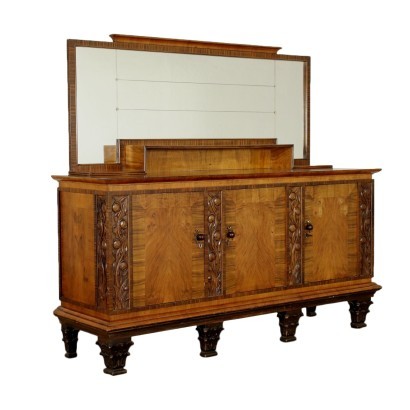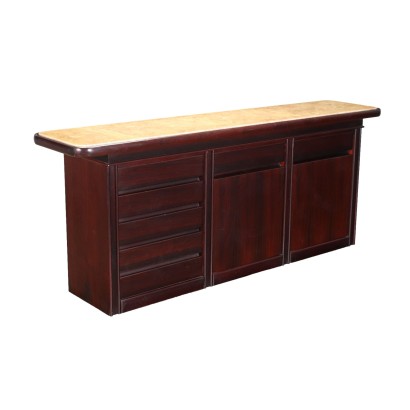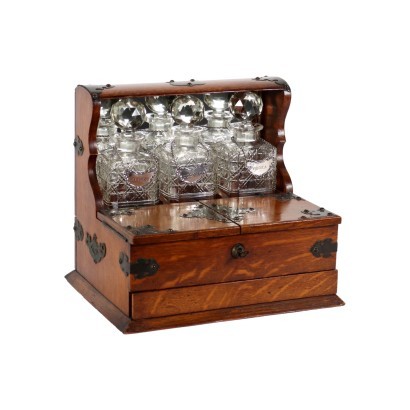Liberty Cupboard with Mirror Walnut Italy 20th Century
Features
Style: Art Deco (1920-1950)
Age: 20th Century / 1901 - 2000
Origin: Italy
Main essence: Walnut , Rosewood
Material: Mirror
Description
Liberty cupboard supported by leafy feet; it has 3 doors alternated with pillars engraved with plant motifs; On top stands a mirror with a moulded frame. Walnut.
Product Condition:
The item shows signs of wear due to age. Any damage or loss is displayed as completely as possible in the pictures. It may require restoration and recovery of french polish. Product with a Certificate of Authenticity and Lawful Origin.
Dimensions (cm):
Height: 183
Width: 207,5
Depth: 59
Additional Information
Style: Art Deco (1920-1950)
The name Art-Decò derives from the exhibition held in Paris in 1925, which was called the International Exhibition of Modern Decorative Arts and was the successor of the Liberty style.Art-Decò is a stylistic historical period formed after the Liberty floral period, shortly after the end of the First World War.
There was an almost radical change anticipated by the growth of the Precisionist movement and that of Cubism (in art), the Art-Decò furnishings were characterized by decidedly more rigid lines and the presence of geometric figures, definitively abandoning the sinuous and moved lines , of objects and furnishings, of the previous Liberty period.
It was established from the dawn of 1915 until the early 30's.
This style was transversal and major exponents were created in the most diverse art forms, from urban architecture to painting, from sculpture to glass masters, from the production of objects as a complement to furnishings to jewelry.





























